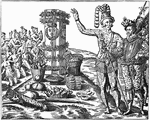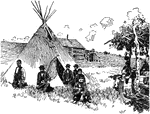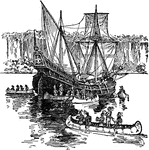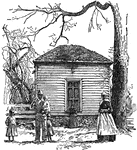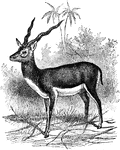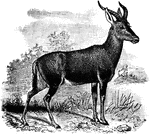
The Half Moon in the Hudson
Henry Hudon's vessel the Halve Maen or Half Moon in the Hudson River when it was first discovered.
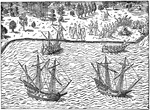
The Huguenots - Landing of John Ribault
In 1562, Ribault was chosen to lead an expedition to the New World to establish a haven for the Huguenots.…
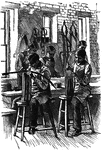
Indian Apprentices Making Harness
In 1911, there were many Indian Industrial Schools. Picture here are some Indian apprentices making…
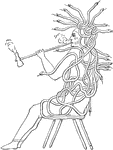
Atatarho
Atotarho is a historical figure for whom there is almost no historical record. Oral tradition stories…
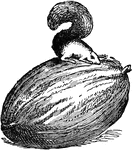
Sioux Totem
The totem or emblem of the Sioux, a Native American tribe has a squirrel on top of a nut.
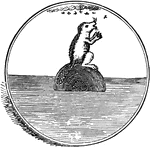
Huron Totem
The totem or emblem of the Huron, a Native American tribe has a beaver on top of a log in the water.
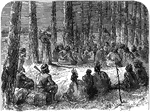
A Jesuit Missionary Preaching to the Indians
A drawing of a Jesuit missionary preaching to Native Americans.
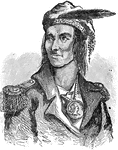
Tecumseh
Tecumseh (March 1768 – October 5, 1813), also Tecumtha or Tekamthi, was a famous Native American…

Chattanooga, Tennessee in 1862
Chattanooga, "the Scenic City", is the fourth-largest city in Tennessee (after Memphis, Nashville, and…

Appearance of the Thames Battle Ground in 1860
The Battle of the Thames, also known as the Battle of Moraviantown, was a decisive American victory…

Colorado Potato Beetle
The Colorado potato beetle (Leptinotarsa decemlineata), also known as the Colorado beetle, ten-striped…

Fight on the Deck of the Serapis
The Serapis was a British frigate that was captured by the Americans during the American Revolutionary…
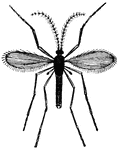
Hessian Fly
The hessian fly or barley midge, Mayetiola destructor, is a species of fly that is a significant pest…

Blue Jay
The Blue Jay (Cyanocitta cristata) is a passerine bird, and a member of the family Corvidae native to…
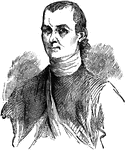
Samuel Kirkland
Rev. Samuel Kirkland (1741 – 1808) was a Presbyterian missionary among the Oneida and Tuscarora…
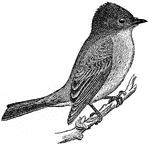
Phoebe
The genus Sayornis is a small group of medium-sized insect-eating birds in the Tyrant flycatcher family…
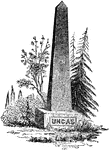
Uncas
Uncas (c. 1588 – c. 1683) was a sachem of the Mohegan who through his alliance with the English…
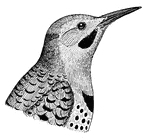
Northern Flicker
The Northern Flicker (Colaptes auratus) is a medium-sized member of the woodpecker family. It is native…
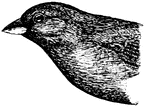
Indigobird (Male)
The Indigobirds and whydahs, are small passerine birds native to Africa. Some species are also known…
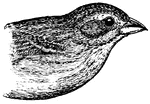
Indigobird (Female)
The Indigobirds and whydahs, are small passerine birds native to Africa. Some species are also known…
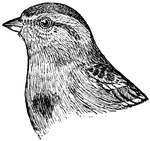
Tree Sparrow
The Tree Sparrow, Passer montanus, breeds over most of Europe and Siberia, and allied forms occur in…
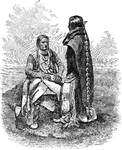
Ute Indians
The Utes are an ethnically related group of American Indians now living primarily in Utah and Colorado.…
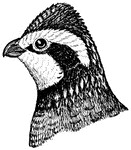
Northern Bobwhite
The Northern Bobwhite, Virginia Quail or (in its home range) Bobwhite Quail (Colinus virginianus) is…
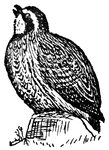
Northern Bobwhite
The Northern Bobwhite, Virginia Quail or (in its home range) Bobwhite Quail (Colinus virginianus) is…

Northern Bobwhite
The Northern Bobwhite, Virginia Quail or (in its home range) Bobwhite Quail (Colinus virginianus) is…

Common Pheasant
The Common Pheasant (Phasianus colchicus), is a bird in the pheasant family (Phasianidae). It is native…
Army Worm
The Fall Army Worm (Spodoptera frugipeda) is part of the order of Lepidoptera and are the caterpillar…
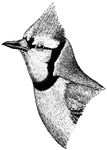
Blue Jay
The Blue Jay (Cyanocitta cristata) is a passerine bird, and a member of the family Corvidae native to…

Barberry
Berberis (Bér-be-ris, barberry, pepperidge bush) a genus of about 450-500 species of deciduous…
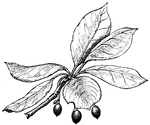
Tupelp
The tupelos, or pepperidge tree, genus Nyssa, are a small genus of about 9 to 11 species of trees with…
![Smilax is a genus of about 300-350 species, found in the tropics and subtropics worldwide. In China for example about 80 are found (39 of which are endemic), while there are 20 in North America north of Mexico[1]. They are climbing flowering plants, many of which are woody and/or thorny, in the monocotyledon family Smilacaceae, native throughout the tropical and warm temperate regions of the world. Common names include catbriers, greenbriers, prickly-ivys and smilaxes. "Sarsaparilla" (also zarzaparrilla, sarsparilla) is a name used specifically for the Jamaican S. regelii as well as a catch-all term in particular for American species. Occasionally, the non-woody species such as the Smooth Herbaceous Greenbrier (S. herbacea) are separated as genus Nemexia; they are commonly known by the rather ambiguous name "carrion flowers"](https://etc.usf.edu/clipart/57000/57029/57029_smilax_mth.gif)
Smilax
Smilax is a genus of about 300-350 species, found in the tropics and subtropics worldwide. In China…
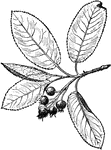
Amelanchier
Amelanchier, also known as shadbush, serviceberry, sarvisberry, juneberry, Saskatoon, shadblow, shadwood,…
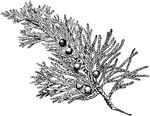
Eastern Juniper
Juniperus virginiana (Eastern Redcedar, Red Cedar, Eastern Juniper, Red Juniper, Pencil Cedar) is a…

Phoebe's Nest
An illustration of a Phoebe's nest in a box. The genus Sayornis is a small group of medium-sized insect-eating…
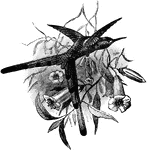
Red-Tailed Comet
A species of hummingbird, the Red-Tailed Comet (Sappho sparganura) is native to South America.

Tasmanian Devil
The Tasmanian Devil (Sarcophilus harrisii) is a carnivorous marsupial native to Tasmania, Australia.
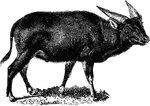
Anoa
Anoa are a subgenus of buffalo comprising two species native to Indonesia: the Mountain Anoa (Bubalus…
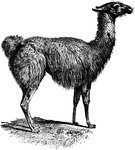
Guanaco
The guanaco (Lama guanicoe) is a camelid animal native to South America that stands between 107 and…
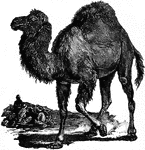
Dromedary
The Dromedary camel (Camelus dromedarius) is a large even-toed ungulate. It is often referred to as…
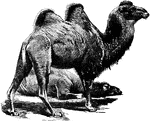
Bactrian Camel
The Bactrian Camel (Camelus bactrianus) is a large even-toed ungulate native to the steppes of north…
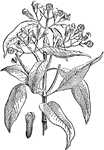
Clove Plant and Seed
Cloves (Syzygium aromaticum, syn. Eugenia aromaticum or Eugenia caryophyllata) are the aromatic dried…
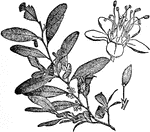
Coca Flower
Coca is a plant in the family Erythroxylaceae, native to north-western South America. The plant plays…
Coca Fruit
Coca is a plant in the family Erythroxylaceae, native to north-western South America. The plant plays…
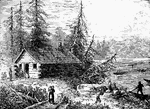
Early Settlers
During this early period Virginia's population grew with the introduction of settlers and servants into…

Spotted Scat
The spotted scat (Scatophagus argus) is a small fish native to the western Pacific Ocean.
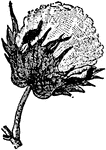
Cotton
An illustration of a ripe cotton capsule after dehiscence. Dehiscence is the spontaneous opening at…
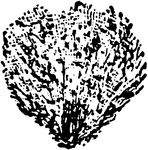
Cotton Seed
An illustration of a cotton seed. Cotton is a soft, staple fiber that grows around the seeds of the…
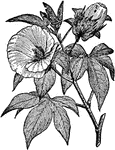
Cotton Plant
An illustration of a cotton plant. Cotton is a soft, staple fiber that grows around the seeds of the…
